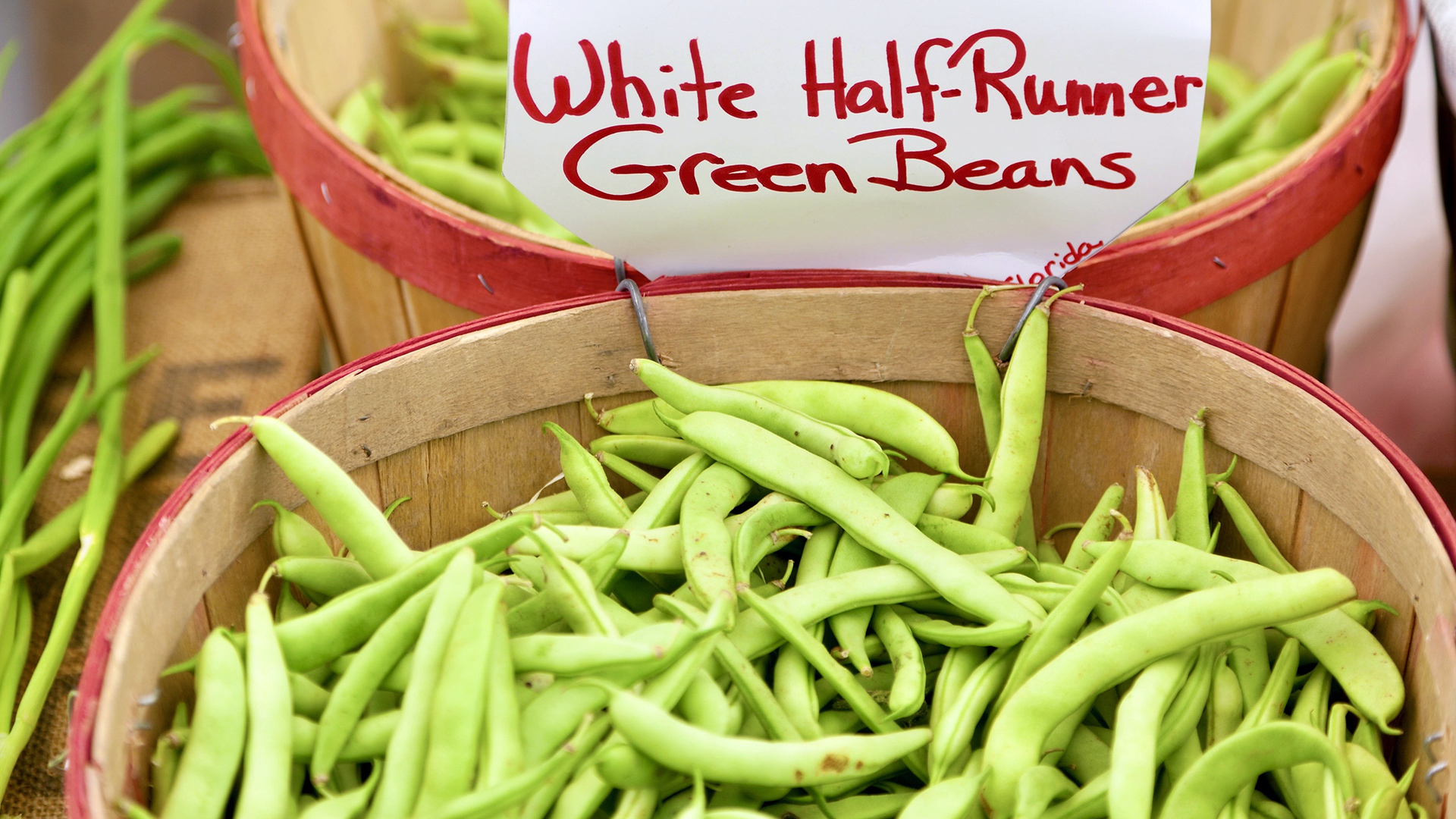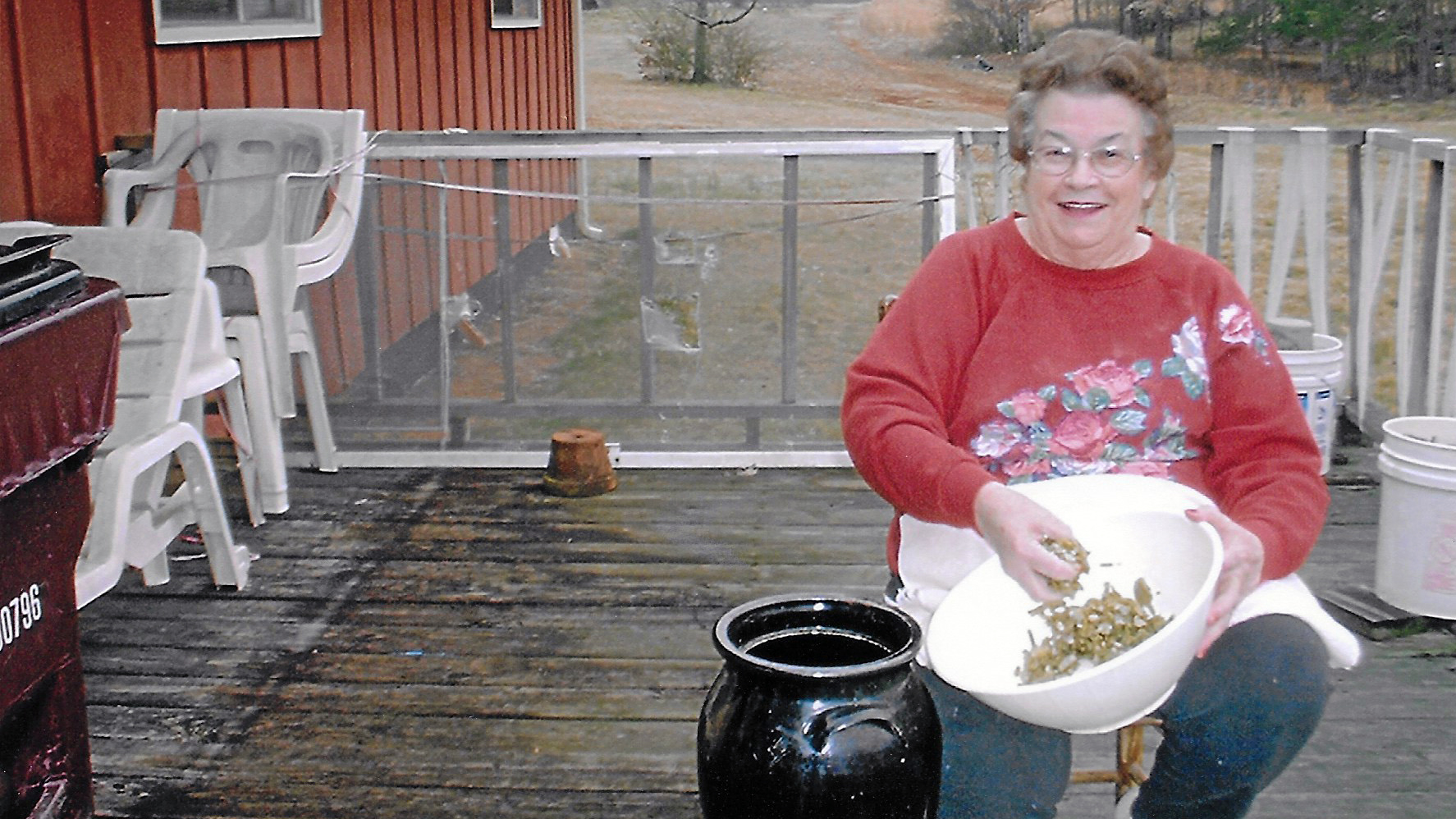
Myrtle’s Malapropisms
A writer remembers pickling beans with her grandmother, “the Appalachian Gothic version of Yogi Berra.”
“I need to get home to give my hostages some water,” my grandmother announces nonchalantly over dinner.
Heads turn, and the coffee-drinkers at Ma Gooch’s cafe in Cleveland, Georgia, fall silent and scratch their heads. However, Myrtle West is not a terrorist; what she means is “hostas,” the flowers she lovingly tends. She has a gift—a genius, really—for malapropism, for mixing up words and syllables in ways that end up more interesting, if not more macabre, than intended.
I like to think of her as the Appalachian Gothic version of Yogi Berra.
So I am not alarmed when she tells me, “I checked the picture of that man with his guts hanging out, and now’s the time to pickle beans.” She is referring to the anatomical diagram in the Farmer’s Almanac, which maps out the custom of “planting by the signs,” a complex astrological system that applies to the preservation, as well germination, of crops.
If you’re going to pickle beans, you need to wait for the moon to circulate through the extremities—the arms, legs, even the neck. Once it moves into the guts of the torso, forget about it. Dire things happen during those periods. Smelly, ill-starred, viscous gunk will ferment instead of the artfully tart, briny delicacies that ease an upset stomach months after the harvest.
If you’re going to pickle beans, you need to wait for the moon to circulate through the extremities—the arms, legs, even the neck. Once it moves into the guts of the torso, forget about it.
So we begin the process: stringing and boiling the beans.
Normally my grandmother uses her in-laws’ legumes, gangly “white half-runners” from seeds that boast a century-old lineage. However, today she is using produce from the Jaemor Farms market over in Alto, which she, to the consternation of the store clerks, calls “J.Lo’s.”
She likes her pickled beans straight; I prefer them tempered with the sweetness of corn, and she defers, as always, to what someone else wants. So we layer beans with corn and salt, over and over, in a voluminous, hand-turned, Georgia-clay churn, which also is more than a hundred years old. My grandmother’s mother—and her mother—stored similar essentials in it. That history alone is enough, for me, to sanctify a vessel. I am happy, though, that it is not a quaint museum relic. For the moment, this churn is just another implement in everyday use.

As we work, I picture my grandmother as a young girl, the reputed belle of the county, another homegrown Ava Gardner, more delectable than any farm-fresh produce, with her Cherokee ancestry showing in her black hair and sepia skin—features I always have coveted. How she unassumingly bewitched my rounder of a grandpa, who had seen it all. I feel vaguely inadequate as a female just now, but grateful nonetheless, as I watch the sure, sweeping movements of her forearms.
We would lose her a couple of years later, but I marveled at her at age 90, when Myrtle West remained one of those genetically blessed beauties, a head-turner among the leathery widower-veterans at the American Legion Hall. She knew how to work a room, as well as how to pickle beans.
“You need to learn these things,” she said that day, giving me one of her meaningful nods, “because who else will?”


If you’re looking for a regular columnist…I think you just found her.
Thank you for this work, for preserving history and culture.